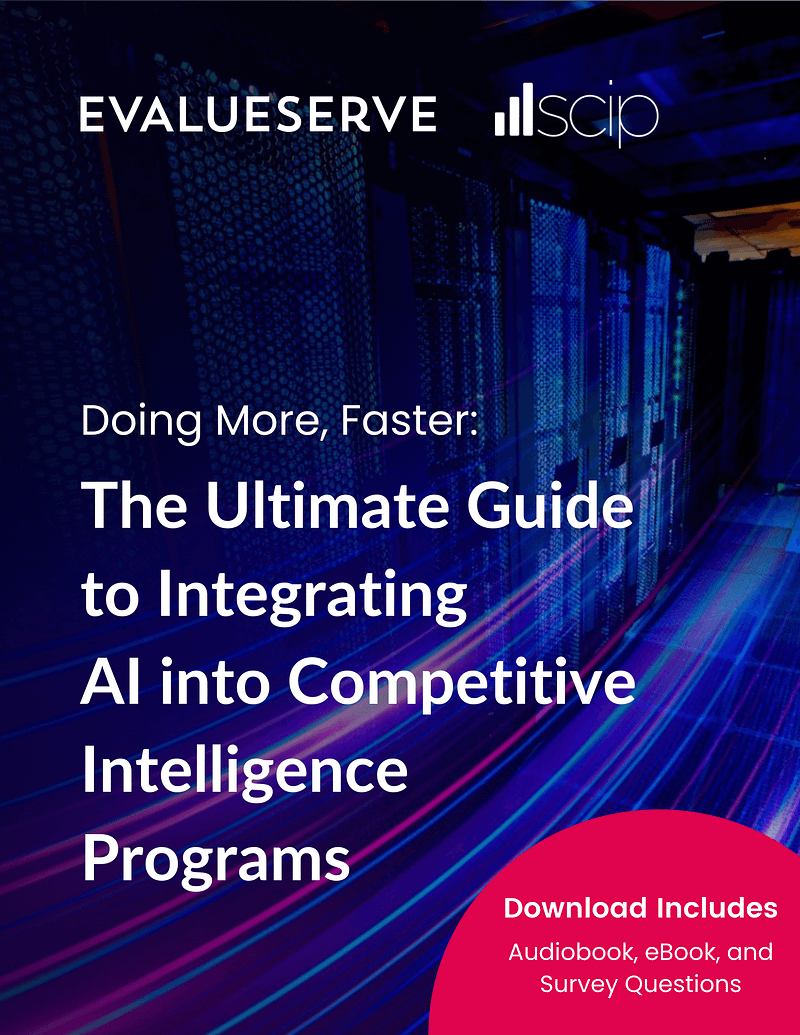Competitive Intelligence – the AI-driven mining of useful insights about competitor brands – isn’t just about keeping up with the competition. When properly utilized, it can convey a real competitive advantage.
It’s worth bearing in mind that competitive intelligence teams serve diverse stakeholder groups, with different needs and domains of interest. They must also do more than simply gather and filter data for appropriate insight. Competitive intelligence must deliver value and drive advantageous change.
Delivering real value across an organization means preparing appropriate data packages and insight for a host of different stakeholder groups including:
- Executives
- Product Development Leads
- Marketing Managers
- Sales Executives
- Research and Development Leads
- And more…
As Steve Roemerman wrote in Forbes in 2020, “Understanding competitor motivations and behaviors help shape product development, pricing, brand positioning and more. The key is to identify challenges, advantages, and white spaces to build a strategy that creates competitive differentiation.”
How to Deliver Real Value with Competitive Intelligence (CI)
One method for giving stakeholders great ROI on their implementation of CI is to track predictively, seeking out innovation and disruption among competitors to uncover new market trends and find out what consumers are looking for.
Adopting CI for this purpose means you stay ahead of the curve. You develop your product offering in line with growing trends and offer a better solution than that provided by your competitors, thereby blindsiding rivals.
A great example of this strategy is the tracking of patents. Patents are difficult and expensive to obtain. When your competitors are filing them, it usually presages new product development. Additionally, tracking these patent filings can uncover new competitors emerging into the field, again keeping you ahead of the curve.

Other Areas for Competitive Intelligence Focus
As well as providing high-level executive oversight into what your competitors are doing, stakeholders across the company benefit from targeted, filtered CI in different ways:
Competitive Intelligence for Marketers and Product Development
Marketing teams can use AI-driven competitive intelligence to delve into product reviews and apply sentiment analysis, then break down the data according to the volume of positive and negative customer reviews. This provides valuable insights into any gaps in the market or features of competitor products that aren’t quite delivering. After all, why learn from your own mistakes when you can learn from your competitors?
This technique enables marketing to create messages which directly address prevalent customer concerns or desires. The same information can either help product teams make amendments to forthcoming product lines, or improvements in existing products to better serve customer needs.
Competitive Intelligence for Sales
Particularly with B2B products and services, strategic insight into acquisitions, personnel moves, and procurement can be very revealing. It can help focus sales teams’ efforts profitably and prevent time being wasted on lost causes.
From rivals opening or closing premises to the hiring of key executives to business acquisitions and partnerships, competitive intelligence can help shape the battle cards of your sales teams, as they prepare for the key objections potential clients will present.
Competitive Intelligence for Research and Development
Every business would do well to upgrade and improve its product lines. Customer sentiment analysis can garner insight into how well your products, and those of your competitors, are meeting a particular trending need.
Social tracking is a helpful tool here. By finding out how frequently, where, and how a product or competitor is being mentioned, opportunities for improvements can be found. You can also track the partnerships your competitors are forging, and then look for any strategic insights you can use when forming your own business relationships.
Competitive Intelligence for Procurement & Supply Chain
CI can be used to track pricing strategies that potential suppliers are using, to ensure you’re getting the best deal from such partnerships. On the supply side, it can help with price-setting as well as competitive storage, shipping, and other ancillary costs. It can even provide insights into supply/demand imbalances.
Here, the opportunities lie in reducing reputational risk and increasing profitability. CI allows for dynamic pricing which fluctuates alongside supply and demand patterns, seasonal changes, and legislative developments, where there may be a cost or efficiency impact.
Competitive Intelligence for C-Suite and Executives
Those at the top of the tree need to have clear oversight and up-to-date information if they are to remain effective leaders. Since the executives’ role is to provide leadership within their departments and teams, they must receive accurate insights which can inform speedy decision-making, particularly in a volatile market.
How to Measure Demand for CI among Stakeholders
Dr. Avner Barnea, writing in Competitive Intelligence Magazine, warns that it’s vital to measure the demand for, and potential effectiveness of, CI within an organization before committing to making it a regular strategic tool. He identifies three possible indicators of demand:
- Demand for Intelligence from in-house stakeholders (subjective measure)
- Growth of CI uptake within the industry in question (competitor adoption)
- Prevalence of an intelligence-focused culture within an organization.
The latter is a vital point. Once you’ve tried a little CI, it’s worth observing how widely the information is disbursed and used within the organization. This provides a guide to how useful CI will be proven as an ongoing strategy.
Partner for Effective Stakeholder Engagement
For companies to sell the notion of implementing CI, it helps to have an experienced partner such as Evalueserve on board. This makes it easier for stakeholders to make use of the manually curated but AI-sourced data that CI can provide.
The time-consuming part — devising a method, implementing the searches, gathering data securely at volume, then manually filtering it and delivering actionable insights – is handled by competitive intelligence professionals while executives focus on addressing any weaknesses or opportunities the data throws up.
Stakeholder buy-in may be a little challenging, to begin with, but when asked, they’re optimistic about the advantages CI can provide. Statista recently reported that in 2020:
- 87% of businesses worldwide felt adopting AI would confer a competitive advantage.
- 77% believed their competitors would adopt it.
That seems definitive. Unsurprisingly, one of the best ways to remain competitive in the twenty-first century is to incorporate AI-powered competitive intelligence.


